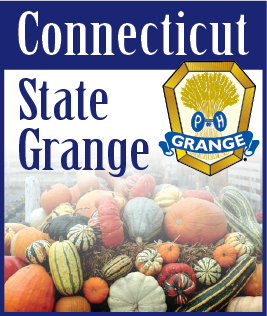| JULY 12, 2010 -- Fourteen years after the first American shad passed over the Greeneville hydroelectric dam on the then-new Norwich Utilities' fish lift, the state's effort to restore the historic shad run to the Shetucket River has plateaued.
In the 2010 migratory season that ended on June 30, 2,459 specimens of the Connecticut state fish were counted swimming into the room-sized fish lift apparatus. From there, the shad were carried by mechanical bucket over the wooden dam and into a deep, slow moving section above the dam known as the Greeneville Pool to spawn.
Each spring from April to the end of June, shad swim in from Long Island Sound, up the 16 miles from the mouth of the Thames River to its start at Norwich Harbor, then into the fresh water environment of the Shetucket to spawn. If not for the dams in the way, shad would continue swimming past where the Shetucket meets the Willimantic River, and into Quinebaug River as far as Putnam, spawning along the way, according to Stephen Gephard, DEP fisheries biologist.
"When we started, the first year there were 900 that went over the Greeneville dam," Gephard said. "Since then the numbers have stabilized (at roughly 1,900 to 2,500). We don't expect it's going to increase, because the habitat is saturated."
There isn't enough food for all the eggs hatching in the Greeneville Pool, he explained, so many die that would otherwise survive.
"There are just too many eggs being deposited in the Greeneville Pool," he said.
Beginning in late spring, the adults start swimming back out to sea, having spawned and left their eggs to hatch, passing back over the dam through an outfall pipe. The juveniles will stay in the fresh water until the fall, then make the journey downstream to the Sound.
"At dusk in the fall, you'll see them popping out of the water," said Mark Greene, operations integrity manager for Norwich Public Utilities.
Migratory shad runs are more often associated with the state's largest river, the Connecticut, where there is still a viable commercial shad fishery, Gephard said. Fish counting equipment at Connecticut River dams in Massachusetts and Vermont show shad numbering in the tens of thousands, far surpassing the Shetucket numbers.
Increasing numbers of spawning shad in both rivers is viewed by state fisheries biologists as essential to full restoration of this popular sportfish that was once a plentiful and historically important component of Connecticut diets. When the Industrial Revolution brought the construction of mills and dams on rivers used by migrating shad, the population began a gradual decline.
That decline has persisted for decades as many of the dams were converted for hydroelectric power generation.
Restoration programs backed by the U.S. Fish & Wildlife Service and state agencies have included the removal of dams and construction of fish lifts and fish passages, and have shown some dramatic results.
But on the Shetucket, the restoration is far from complete.
The problem, Gephard said, isn't at the Greeneville dam - the fish lift there appears to be working well - but what comes after it. Shad swimming a mile upstream from the Greeneville dam into the Quinebaug River are stopped after about a mile at the Tunnel hydroelectric dam, a facility owned by First Light Power, a subsidiary of the French company GDF Suez. Shad that stay on the Shetucket hit up against another First Light hydroelectric dam at Taftville, and beyond that is the Occum hydroelectric dam, owned by Norwich Public Utilities.
The Tunnel dam has a fish lift, and the other two have fish ladders. These are smaller, less complicated systems than the fish lift at Greeneville that are essentially gradual ramps where a stream of water is channeled for the fish to swim through. All three were built in the last five years as a requirement of the federal licenses to operate the dams. But fewer than 20 shad passed through the Tunnel or Taftville dams last year or this year, Gephard said, and none made it through the one at Occum. The DEP has concluded that without modifications to these fish passages, the shad won't start using them.
"We're not satisfied," Gephard said. "We're going to continue to have conversations with First Light about next steps."
Once changes to Taftville and Tunnel are made, the Occum ladder could next, Gephard said.
"If we can resolve the problems at Tunnel and Taftville, we'll be in a better place to evaluate Occum," he said.
Greene, of Norwich Public Utilities, said the company has been cooperating with the DEP on its fish passage operations, and plans to continue doing so.
"We've always been a big proponent of the fish passages," he said. "We embrace it, and work closely with the DEP to make it work. It's good environmental stewardship."
It's also good public relations for the company, he added.
Each spring, the utility hosts a steady stream of school groups and Scout troops on tours of the fish lift at Greeneville, including the control room where views of the fish can be seen on video screens connected to underwater cameras. The company's website also displays the video.
Running the fish passages at Greeneville and Occum does take company resources in staff time, and during the spring run, the Occum dam generates somewhat less power than it would without the ladder because water flows can't be at the maximum level, said Wayne McLaughlin, control room operator foreman.
"It does limit us at Occum, but at Greeneville it doesn't matter," he said.
Despite that, Greene said, the company believes it's made a fair trade-off between the needs of the fish and its need to generate power.
"It's a complex dance sometimes, but we've got it mastered," Greene said.
Note: Readers may remember that this historic fish, the American shad, was named Connecticut's official state fish in May 2003 because of the grassroots efforts of the Norwich Grange. |
